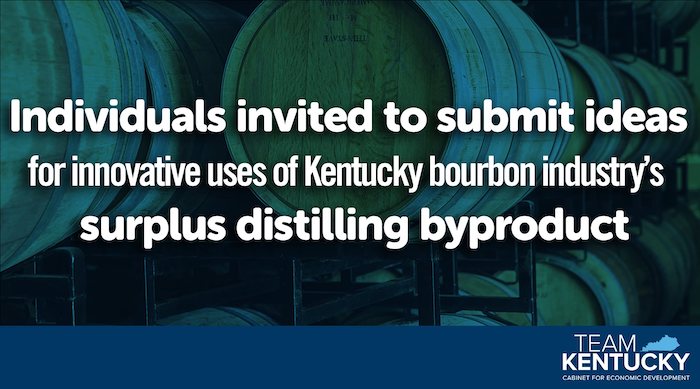The Kentucky government is calling on innovators to pitch ideas for what to do with the surplus of stillage that has grown over the past decade.
The number of Kentucky distillers has increased by 250% in the past decade, and so has the industry’s spent-grain byproduct known as stillage.
Entrepreneurs and innovators can submit creative ideas, technologies and solutions for other uses for the distilling byproduct by Aug. 30. The top submitted ideas will be entered into a reverse pitch competition Oct. 25 during the annual Distillers Grains Symposium in Louisville to an audience of distillers and industry stakeholders.

“Our state’s bourbon industry continues to grow at an incredible rate. That means more revenue coming into the state, more quality job opportunities for Kentucky residents and more global recognition for our outstanding brands,” Kentucky Gov. Andy Beshear said in a prepared statement. “However, it also means a rise in byproduct within the industry, so we are asking people for their best ideas to use this stillage in ways that create jobs and moves Kentucky’s agritech industry forward. We’re building a sustainable economy that works for all Kentuckians, and that includes ensuring our industries operate as efficiently as possible.”
Leading up to the symposium, presenters will work with entrepreneurs and pitch experts to refine their pitches. The winner will get the opportunity to work alongside distilleries and stakeholders across the state to implement their ideas for surplus stillage usage.
“We are working closely with multiple stakeholders to find innovative and environmentally responsible ways to manage this increased volume of stillage,” Kentucky Energy and Environment Cabinet Secretary Rebecca Goodman said. “We believe it could be an integral part of the state’s agritech initiative.”
For every gallon of bourbon produced, approximately 10 gallons of stillage remains — with an estimated 96 million gallons produced statewide annually. Demand for stillage is declining as the supply is increasing. Whole stillage is mostly water, but acidic and has a high biological oxygen demand.
Ideally, pitches should meet the following criteria:
- Prioritize sustainability and environmental impact;
- Demonstrate an economic value to the distillery and the end-user of the stillage;
- Identify the size of the distillery the solution is targeting;
- Address the location and space requirements of the solution, if any equipment or process footprint is required;
- Estimate product development costs, if applicable;
- Estimate the initial investment, ongoing costs and profits, if applicable, of the solution to the parties involved;
- Highlight the financial, sustainable and environmental benefits of the solution;
- Explain if/what testing or pilot demonstration has taken place and whether it was successful;
- Highlight the scalability of the solution; and
- Project the solution’s implementation/start-up time.








